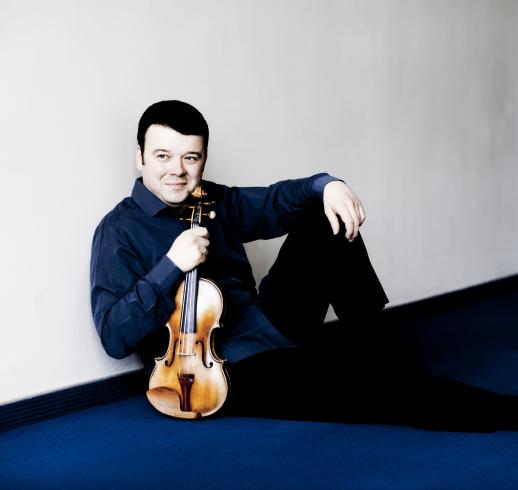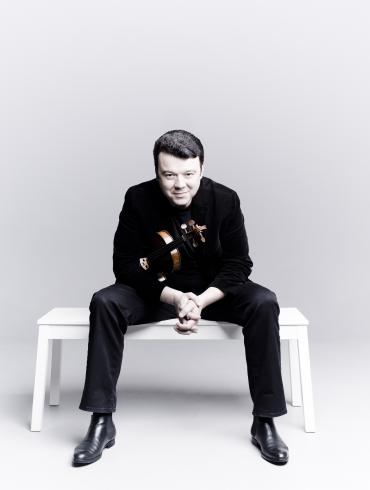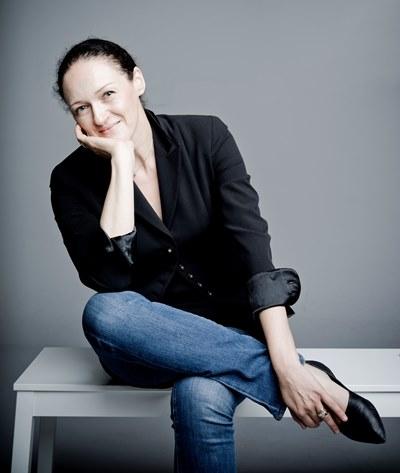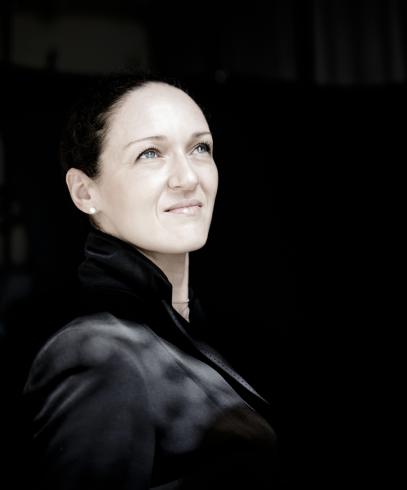Vadim Gluzman & Angela Yoffe
Violin and Piano
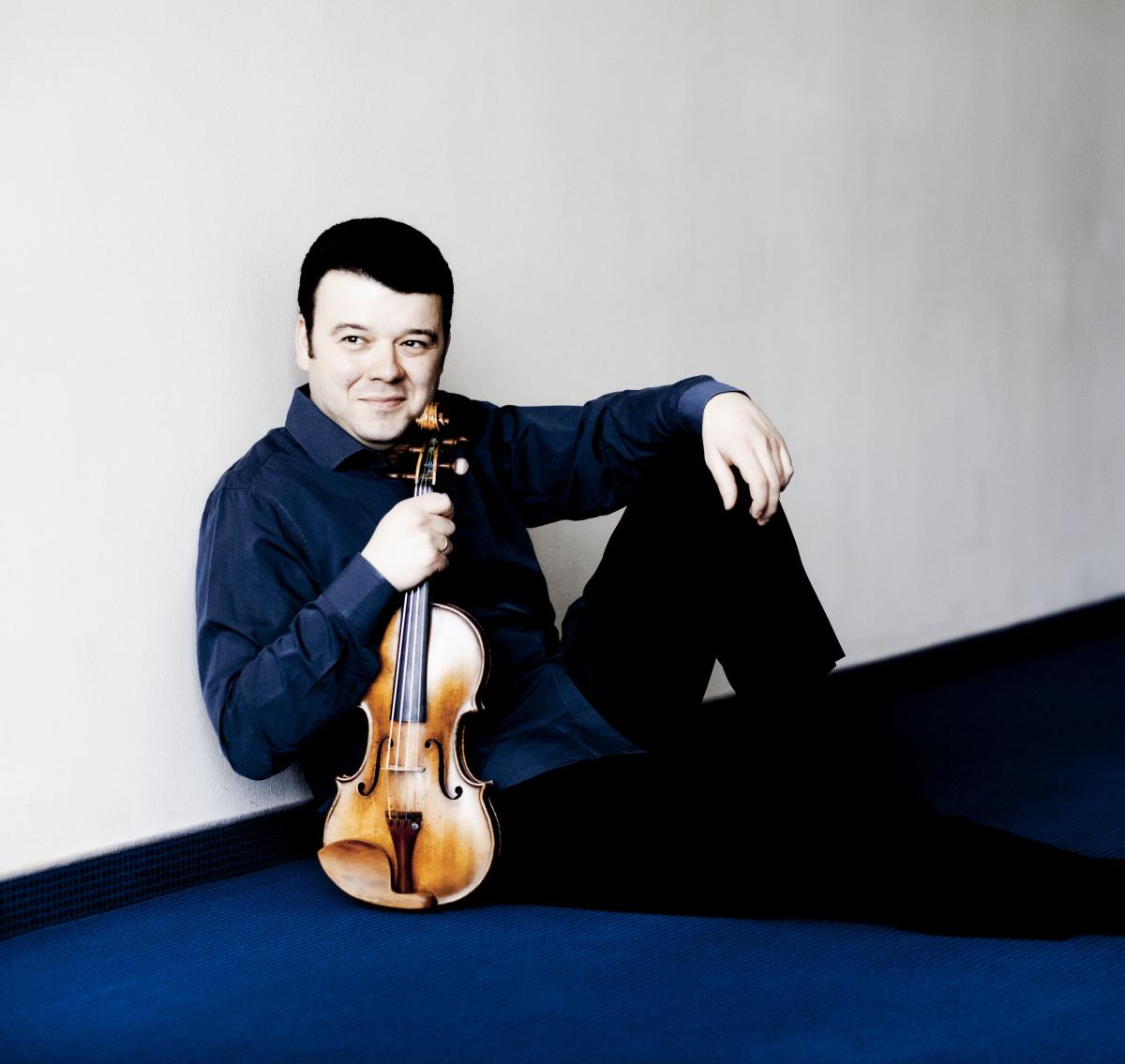
Vadim Gluzman and Angela Yoffe will make their Phillips Music debut with works by Arvo Pärt, Richard Strauss, Igor Stravinsky, Ernest Bloch, and Mario Castelnuovo-Tedesco.
Program
Renowned violinist Vadim Gluzman was born in the former Soviet Union in 1973, and moved to Israel in 1990. Much encouraged by Isaac Stern, Gluzman was the recipient of the Henryk Szeryng Foundation Career Award in 1994. Since then he has appeared as a concert soloist and performed in recitals throughout the world, and has also recorded extensively. Angela Yoffe, originally from Riga, Latvia, is Gluzman’s regular recital partner and they have made several recordings for the BIS label. Their program includes the early Violin Sonata by Richard Strauss, as well as 20th-century works by Stravinsky, Bloch, and Arvo Pärt, alongside Mario Castelnuovo-Tedesco’s brilliant and witty transcription of themes from Rossini’s Barber of Seville.
PROGRAM:
ARVO PÄRT (b. 1937)
Spiegel im Spiegel
RICHARD STRAUSS (1864-1949)
Sonata for Violin and Piano in E-flat Major, Op. 18
Allegro, ma non troppo
Improvisation: Andante cantabile
Finale: Andante – allegro
INTERMISSION
IGOR STRAVINSKY (1882-1971)
Suite Italienne
Introduzione
Serenata
Tarantella
Gavotta con due variazioni
Minuetto - finale
ERNEST BLOCH (1880-1959)
Baal Shem Suite (Three Pictures of Chassidic Life)
Vidui (Contrition)
Nigun (Improvisation)
Simchas Torah (Rejoicing)
MARIO CASTELNUOVO-TEDESCO (1895-1968)
Rossini Figaro Paraphrase for Violin
Please note that this concert will be held at The Society of the Cincinnati at Anderson House, 2118 Massachusetts Ave., NW.
About the Artists
Vadim Gluzman’s extraordinary artistry brings to life the glorious violinistic tradition of the 19th and 20th centuries. Gluzman’s wide repertoire embraces new music and his performances are heard around the world through live broadcasts and a striking catalogue of award-winning recordings exclusively for the BIS label.
The Israeli violinist appears regularly with major orchestras such as the Berlin Philharmonic, Boston Symphony, Cleveland Orchestra, Chicago Symphony, Philadelphia Orchestra, San Francisco Symphony, Israel Philharmonic, London Philharmonic, London Symphony, and Leipzig Gewandhaus. Gluzman has enjoyed collaborations with many of today’s leading conductors, including Riccardo Chailly, Christoph von Dohnányi, Tugan Sokhiev, Sir Andrew Davis, Neeme Järvi, Michael Tilson Thomas, Semyon Bychkov, Jukka-Pekka Saraste, Paavo Järvi, and Hannu Lintu. His festival appearances include performances at Verbier, Tanglewood, Ravinia, and Lockenhaus, as well as the North Shore Chamber Music Festival in Chicago, founded by Gluzman and pianist Angela Yoffe, his wife and recital partner.
Highlights of his 2017/2018 season include appearances with the Boston Symphony under Tugan Sokhiev and debut performances with the Royal Concertgebouw Orchestra under Riccardo Chailly. Mr. Gluzman returns to Leipzig’s Gewandhaus Orchestra and celebrates Leonard Bernstein’s centennial year with performances of his Serenade for violin and orchestra with both the BBC Symphony in London and the San Francisco Symphony. He tours Europe in a piano trio with pianist Yevgeny Sudbin and cellist Johannes Moser, including engagements at London’s Wigmore Hall and Berlin’s Konzerthaus, and will appear as soloist with the Toronto, Vancouver, Oregon, Göteborg and Lucerne Symphonies, the Czech Philharmonic and the Finnish Radio Orchestra. Gluzman will lead performances with the Vienna Chamber Orchestra and the ProMusica Chamber Orchestra in Columbus, Ohio, where he continues in his fourth year as Creative Partner and Principal Guest Artist.
This season, Gluzman will give the European premiere of Sofia Gubaidulina’s Triple Concerto for Violin, Cello, and Bayan with Johannes Moser, Elsbeth Moser, and the Tonhalle Orchestra Zürich under Omer Meir Wellber. He has given live and recorded premieres of other works by Gubaidulina, as well as Giya Kancheli, Peteris Vasks, Michael Daugherty, Lera Auerbach and most recently Elena Firsova.
Vadim Gluzman’s latest CD for the BIS label features Brahms’ Violin Concerto with Lucerne Symphony conducted by James Gaffigan and includes the composer’s Sonata No.1 for Violin and Piano with Angela Yoffe. Accolades for his extensive discography include the Diapason d’Or of the Year, Gramophone’s Editor’s Choice, Classica Magazine’s esteemed Choc de Classica award, and Disc of the Month by The Strad, BBC Music Magazine, ClassicFM, and others.
Born in the former Soviet Union in 1973, Gluzman began violin studies at age 7. He studied with Roman Sne in Latvia and Zakhar Bron in Russia before moving to Israel in 1990, where he became a student of Yair Kless. In the United States, he studied with Arkady Fomin in Dallas and at The Juilliard School with Dorothy DeLay and Masao Kawasaki. Early in his career, Gluzman enjoyed the encouragement and mentorship of Isaac Stern which continued until the Stern’s passing in 2001. In 1994 he received the prestigious Henryk Szeryng Foundation Career Award.
Vadim Gluzman plays the legendary 1690 ‘ex-Leopold Auer’ Stradivari on extended loan to him through the generosity of the Stradivari Society of Chicago.
Pianist, producer, and educator, Angela Yoffe, is widely admired for her dazzling musicianship and passion for music education. In 2010, Yoffe created Chicago’s annual North Shore Chamber Music Festival and each year presents career advancement awards, such as the Arkady Fomin Scholarship, to exceptional emerging artists. Yoffe is also founder of the Collaborative Piano Class at the Chicago College of Performing Arts at Roosevelt University and the Creative Learning Program of the Betty Haag Academy of Music. She has created collaborative projects with the International Center on Deafness and the Arts and the Lurie Children’s hospital.
Yoffe has performed as a chamber musician and recitalist in New York, Washington, Chicago, San Francisco, London, Berlin, Paris, Tel Aviv, Geneva, Rome and Tokyo among others. She has appeared as guest soloist with the Seattle Symphony, the Omaha Symphony, SWR Stuttgart Radio Orchestra, the Hamburg Symphony and with New York’s Jupiter Symphony under the batons of Andrey Boreyko, Gerard Schwarz, Jens Nygaard, Sebastian Lang-Lessing, and Victor Yampolsky. Yoffe has been invited to perform at the Verbier Festival in Switzerland, Lockenhaus Festival in Austria, Festival de Radio France, Schleswig-Holstein Festival, Colmar Festival in France, MIDEM Festival, Ravinia Festival, Pablo Casals Festival in Puerto Rico, the Schwetzingen Festspiele, and the Bantry Festival in West Cork.
Yoffe records exclusively for BIS Records, and her discography includes recently released albums with violinist Vadim Gluzman featuring violin and piano sonatas by Sergey Prokofiev and Johannes Brahms. Her world premiere recording of Lera Auerbach’s “24 Preludes for Violin and Piano” (composed for Ms. Yoffe and Mr. Gluzman) was released on BIS Records to rave reviews, as well as their other albums: “Time… and Again,” “Ballet for a Lonely Violinist,” and “Fireworks”.
Yoffe was born in Riga, Latvia into a family of respected musicians. After studying piano performance in the Soviet Union and Israel, she continued with Joaquín Achúcarro and Jonathan Feldman in the United States and became an assistant to Dorothy DeLay at the Juilliard School of Music. Angela resides between Chicago and Tel Aviv with her husband, violinist Vadim Gluzman, and their daughter Orli.
Notes
Arvo Pärt, Spiegel im Spiegel
Spiegel im Spiegel, literally “The mirror in the mirror,” was written for and dedicated to the violinist Vladimir Spivakov in 1978 just before Pärt left his native Estonia. Spivakov gave the first performance at the Moscow Conservatory on December 27, 1978. An example of Pärt’s pared-down minimalist style, this haunting work belies its apparent simplicity: a long violin melody underpinned and decorated by single piano notes that form three-note chords. The hypnotic effect of this music might be described as the musical equivalent of gazing through a slowly revolving kaleidoscope, changing very slowly and creating a sense of stillness. The harmonic language is deceptively straightforward, but the result is music of great beauty in which time seems to stand still.
Richard Strauss, Sonata for Violin and Piano in E-flat Major, Op. 18
When Strauss composed this work in 1887–88, he was in his early twenties. It was one of several chamber works from the start of his career (others include a cello sonata and piano quartet) and was completed just as he was embarking on the series of orchestral tone poems that came to define his mature output, and a few years before his first opera, Guntram. The Violin Sonata was dedicated to a childhood friend, Robert Pschorr (1868–1930) who went on to become a distinguished chemist. The first performance was given on March 10, 1888 in Munich by the violinist Robert Heckmann and pianist Julius Buths.
Written in Strauss’s favorite “heroic” key of E-flat Major, the first movement opens with a fanfare-like idea on the piano that is answered quietly by the violin. Another tender motif is also introduced by the piano before being taken up and extended by the violin. The second main theme is a rising melody, marked espressivo ed appassionato with the violin soaring above the piano. Strauss’s music throughout this movement has a tumultuous energy that mirrors better-known works from the same time, including the tone poem “Don Juan.”
The slow movement, in A-flat Major, is marked Andante cantabile and it is a kind of song without words for violin. Described by the composer as an “improvisation,” the outer sections are notable for their lyrical freedom, while the more turbulent central section (which begins in C-sharp minor but passes through many keys) has a much more agitated piano part, the violin retains its song-like character. The movement closes in a mood of quiet tranquility.
After a short piano introduction marked Andante (that is very reminiscent of Brahms), the main Allegro is launched with a surging theme that sets the tone for what follows. As in the first movement, there are three contrasting ideas each developed with consummate skill. The Sonata ends in a mood of unbridled optimism with a resolute affirmation of E-flat Major.
Igor Stravinsky, Suite Italienne (arr. Stravinsky and Samuel Dushkin)
Stravinsky’s ballet Pulcinella was based on themes that he believed to be by the Italian Baroque composer Pergolesi (though we now know most of them are by Pergolesi’s contemporaries). An astonishingly ingenious reworking of earlier material, the original ballet is one of the masterpieces of musical Neoclassicism. Stravinsky himself described Pulcinella as “my discovery of the past, the epiphany through which the whole of my later work became possible. It was a backward look, of course–the first of many love affairs in that direction–but it was a look in the mirror, too.” The ballet was scored for three solo singers and orchestra and it was first performed at the Paris Opéra in 1920. Stravinsky quickly made an orchestral suite from the ballet, and later derived a series of other works. The first was a Suite for Violin and Piano (1925) for which he enlisted the help of the great Polish violinist Paul Kochanski. A decade later, in 1933, he completed the Suite Italienne for the cellist Gregor Piatigorsky and at about the same time made a violin version in collaboration with Samuel Dushkin, for whom Stravinsky had written his Violin Concerto in 1931. The movements of the Suite Italienne will be familiar to anyone who knows the orchestral suite, but the new instrumental colors and effects that Stravinsky and Dushkin found in the violin and piano version give it a fresh and highly individual character.
Ernest Bloch, Baal Shem Suite (Three Pictures of Chassidic Life)
The Baal Shem Suite was composed in 1923, after Bloch had already written several large-scale works explicitly inspired by his Jewish faith, including the Israel Symphony and Schelomo (both 1916). He had also written some important chamber works such as the Violin Sonata No. 1 (1920), the Suite for Viola and Piano (1919) and the first of his five numbered string quartets (1916). With this impressive group of compositions behind him, some of Bloch’s friends considered Baal Shem to be rather a slight work. This certainly wasn’t the view of his publisher Carl Fischer: when Bloch and André de Ribaupierre (the violinist for whom he wrote the work) played it to him, Fischer is reported to have jumped up excitedly and said “Now Bloch, you’re really getting somewhere!” It quickly became one his most successful works and has remained so ever since.
The first of the three movements, Vidui (Contrition) begins with rhapsodic violin phrases over piano chords. The piano becomes more animated and the music works towards a climax before returning to the freer style of the opening, settling eventually on a chord of E Major. Nigun is subtitled an “improvisation,” and for extended periods the violin muses expressively over piano tremolos, like an accompanied cadenza. A change of mood is heralded by a more urgent theme full of Jewish inflections. This is first heard on the piano and is quickly taken up by the violin. The opening material returns, but this time the violin writing is more flamboyant, full of dramatic flourishes mirrored by the piano. Simchas Torah (Rejoicing) has a warm-hearted, celebratory feeling. Suzanne Bloch, the composer’s daughter, likened it to “the Bloch who liked to tell a good Jewish story, have a good meal, look around at his family and friends, and pour out his unique warmth and sense of well-being.”
Mario Castelnuovo-Tedesco, Rossini Figaro Paraphrase for Violin
Castelnuovo-Tedesco was born in Florence in 1895. His career in Italy flourished in the 1920s, when his music was heard all over Europe, including at the first festival of the International Society for Contemporary Music in 1922. His output was prolific, including many songs, piano works, chamber pieces, and music for orchestra (among which a series of overtures based on Shakespeare’s plays are particularly impressive). In 1938, Mussolini’s racial laws were the last straw for a Jewish composer whose works had already been banned on Italian Radio. Sponsored by Jascha Heifetz, Castelnuovo-Tedesco was able to immigrate to the US where he began a successful new career composing movie scores in Hollywood. His pupils from this period are a remarkable group including Henry Mancini, Nelson Riddle, André Previn, and John Williams. Castelnuovo-Tedesco’s prodigious output of concert works continued, included pieces for friends. Figaro, based on the “Largo al factotum” from Rossini’s Barbiere di Siviglia was originally conceived for the cellist Gregor Piatigorsky in 1943 but when Jascha Heifetz saw it, he asked Castelnuovo-Tedesco for a violin version. That same year the composer obliged with an even more difficult transcription for him that remains one of the most effective of all showpieces for violin and piano–at once both enchanting and electrifying.
-Nigel Simeone, 2017
